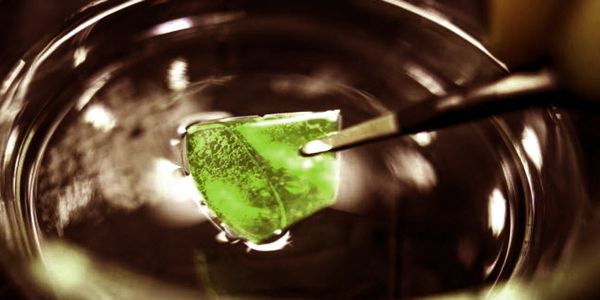Hydrogen gas, which is produced from water with the help of sunlight, is one promising source of renewable energy. Researchers at Linköping University in Sweden have created a material called nanoporous cubic silicon carbide, which has the potential to capture solar energy and split water for the production of hydrogen gas. The research was published in the journal ACS Nano.
“New sustainable energy systems are required to meet global energy and environmental challenges, such as rising carbon dioxide emissions and climate change,” says Jianwu Sun, senior lecturer in Linköping University’s Department of Physics, Chemistry, and Biology, who led the new study.
One prospective source of renewable energy is hydrogen gas produced from water with the aid of sunlight. Researchers have developed nanoporous cubic silicon carbide, which exhibits promising properties to capture solar energy and split water for hydrogen gas production.
The energy density of hydrogen is three times that of gasoline. It can be used to generate electricity via a fuel cell, and hydrogen-powered vehicles are already on the market. When hydrogen gas is used to generate energy, the only thing that results is pure water. In contrast, carbon dioxide is produced when hydrogen is produced because the most commonly used technology today relies on fossil fuels for the process. When 1 tonne of hydrogen gas is produced, 9-12 tonnes of CO2 are emitted.
Producing hydrogen gas by splitting water molecules with solar energy is a sustainable approach that could provide hydrogen gas from renewable sources without releasing carbon dioxide into the atmosphere. The ability to convert solar energy to fuel that can be stored is a significant advantage of this method.
“Conventional solar cells generate energy during the day, which must be used immediately or stored in, for example, batteries. Hydrogen is a promising source of energy because it can be stored and transported in the same way that traditional fuels like gasoline and diesel can “Jianwu Sun explains.

It is, however, not an easy task to split water using sunlight energy to produce hydrogen gas. To be successful, it is necessary to find cost-effective materials with the right properties for the photo-electrolysis reaction that splits water (H2O) into hydrogen (H2) and oxygen (O2). The majority of the energy in sunlight that can be used to split water is in the form of ultraviolet and visible light.
As a result, a material that can efficiently absorb such radiation and generate charges with enough energy to split water molecules into hydrogen and oxygen gases is required. Most materials studied thus far are either inefficient in their use of visible sunlight energy (titanium dioxide, TiO2, for example, absorbs only ultraviolet sunlight) or lack the properties required to split water into hydrogen gas (for instance, silicon, Si).
Jianwu Sun’s research team has looked into cubic silicon carbide or 3C-SiC. The researchers created a cubic silicon carbide with many extremely small pores. The material, known as nanoporous 3C-SiC, has promising properties that indicate it could be used to generate hydrogen gas from water using sunlight. The current study, published in the journal ACS Nano, demonstrates that this new porous material can efficiently trap and harvest ultraviolet and most visible sunlight.
Furthermore, the porous structure promotes the separation of charges with the necessary energy, and the small pores provide a larger active surface area. This improves charge transfer and increases the number of reaction sites, increasing the efficiency of water splitting even further.
“The main result we found is that nanoporous cubic silicon carbide has a higher charge-separation efficiency, which allows for much better water-to-hydrogen splitting than planar silicon carbide,” says Jianwu Sun.
The research was funded in part by the Swedish Research Council, FORMAS, and the Swedish Foundation for International Cooperation in Research and Higher Education, among others.















